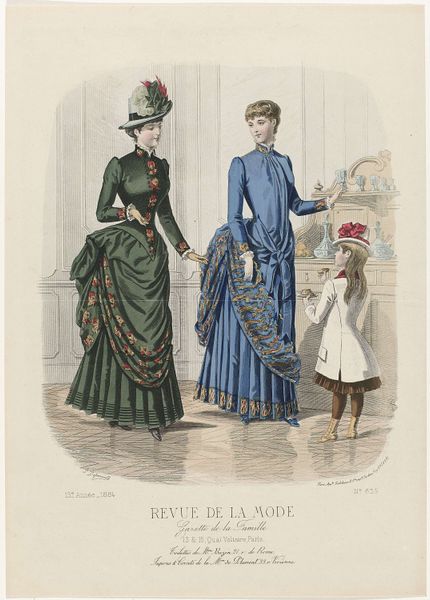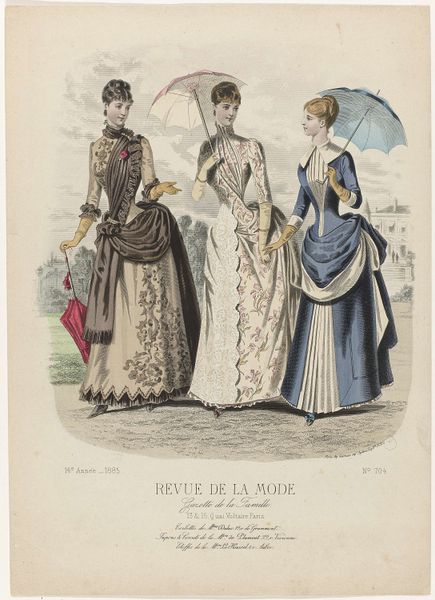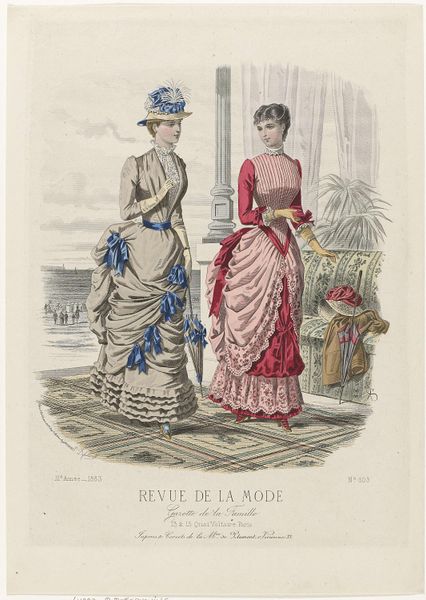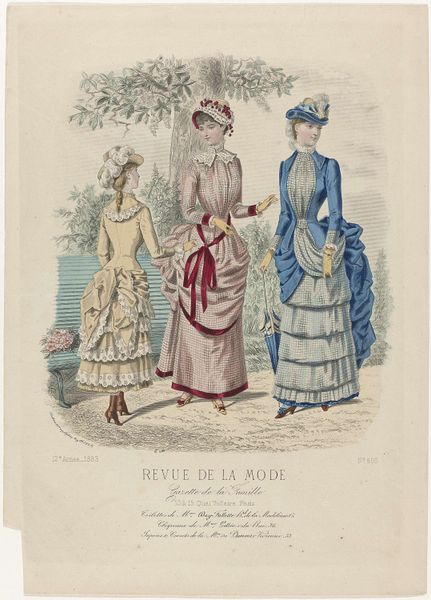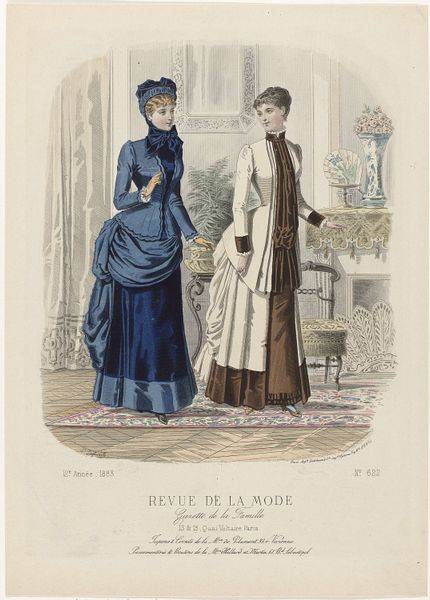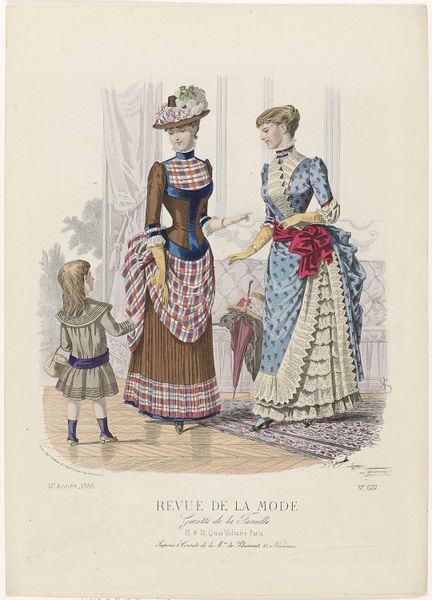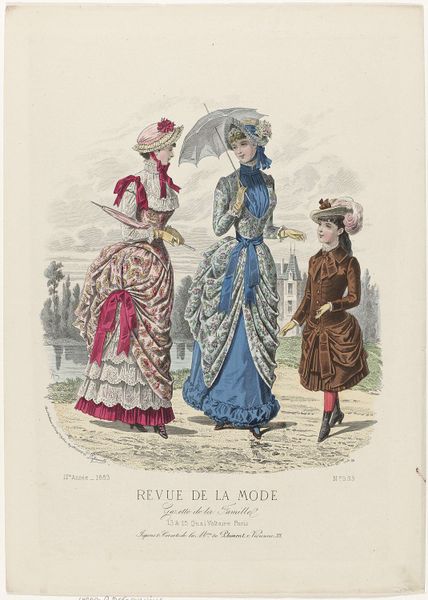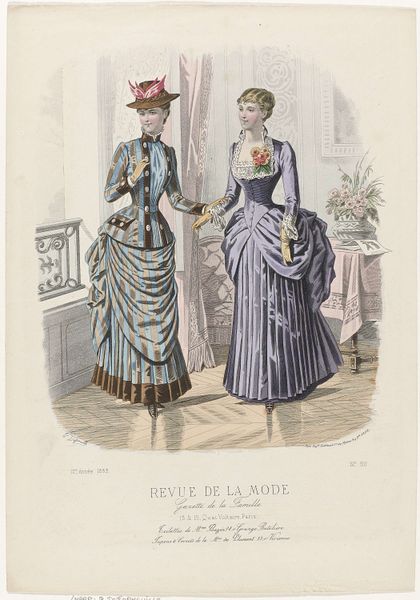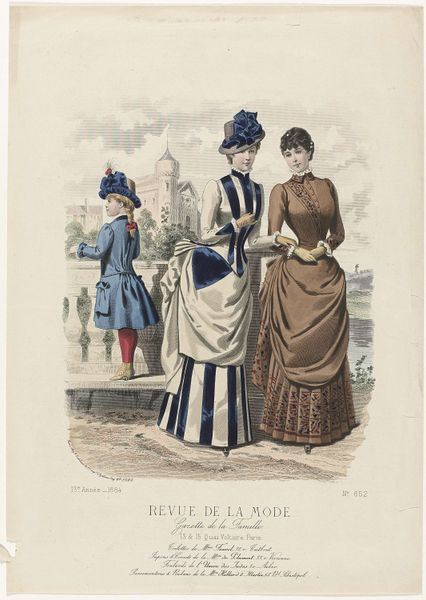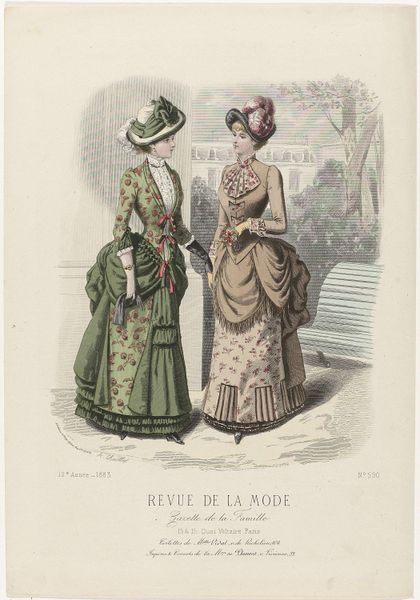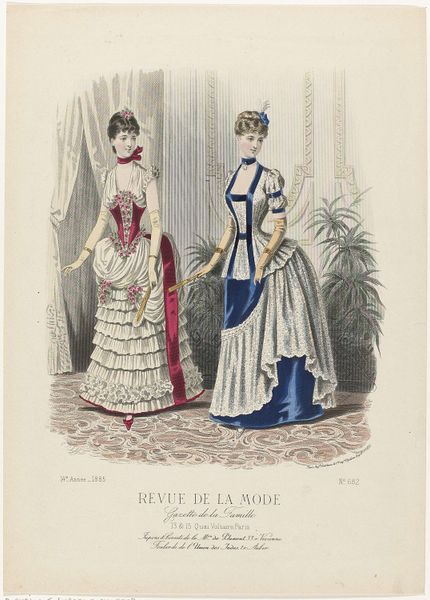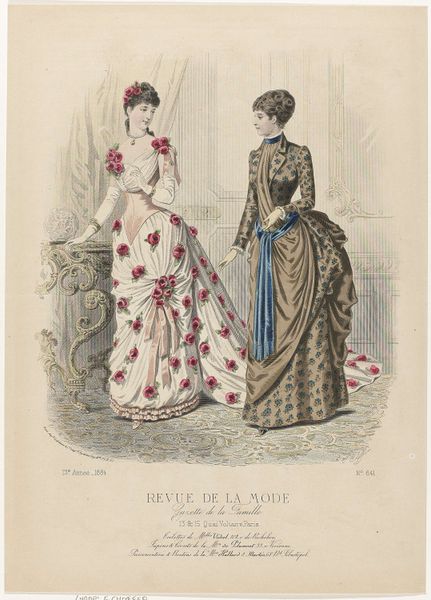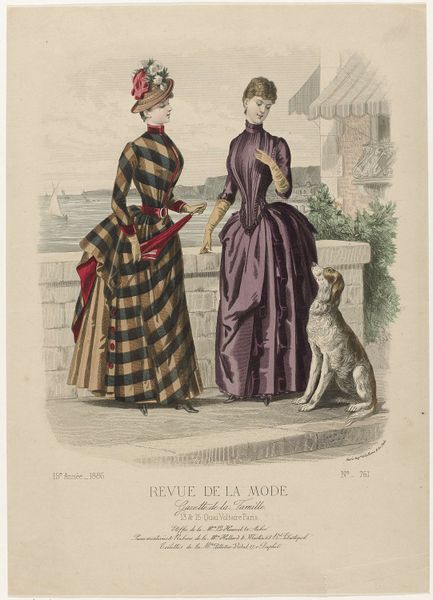
Revue de la Mode, Gazette de la Famille, dimanche 21 septembre 1884, 13e Année, No. 664: Toilettes de M.me Vignon (...) 1884
0:00
0:00
drawing, print
#
drawing
# print
#
figuration
#
historical fashion
#
watercolour illustration
Dimensions: height 375 mm, width 268 mm
Copyright: Rijks Museum: Open Domain
Curator: Let's turn our attention to this print, "Revue de la Mode, Gazette de la Famille," dated September 21, 1884, by A. Chaillot. It's a hand-colored print, featuring three figures in elaborate outfits. What are your immediate impressions? Editor: The first thing that strikes me is the sheer excess of material on display. So many layers, ruffles, bustles! The process of making, fitting, and wearing these garments must have demanded tremendous resources and labor. Curator: Indeed. And the image itself serves as a powerful document of its time, reflecting the rigid social expectations placed upon women, and the complex interplay of fashion, class, and identity. We see this manifested especially in the fashionable silhouette. Editor: I am wondering, what materials were likely used? Based on the way the fabrics drape in the illustration, you might assume the dresses feature wool or silk. What does this say about industrial production and textile availability at that point? Curator: An excellent point. Access to such textiles indicates a certain socioeconomic standing and reflects a highly developed textile industry and global trade networks which must be studied. It also indicates ideas around conspicuous consumption and aspiration at the time. Editor: The postures, too, suggest something about constraints on movement and how those clothes were built to show off the supposed curves of the person within. Those lines must have been supported by a cage of whalebone or metal to give that impression! It raises important questions about how labor and power are materialised in dressmaking. Curator: Exactly, the structure underneath these clothes! From a feminist perspective, these elaborate constrictions, although aesthetically beautiful, symbolize the limitations imposed on women's freedom. Were these fashions truly chosen, or did they serve as markers of ownership? Editor: This image certainly reminds us that clothing wasn't merely about decoration, but also about asserting dominance. I wonder, who actually made the items depicted here? Whose labor supported it? This historical depiction serves to connect current issues around labour, gender, and visibility. Curator: Absolutely. I appreciate how analyzing this artwork compels us to delve deeper into issues of representation and material realities. It makes us question not just what we see but who benefits. Editor: Agreed. Studying how fashion consumes not just materials, but time, skill, and human energy forces us to rethink the role of aesthetics in social and economic systems.
Comments
No comments
Be the first to comment and join the conversation on the ultimate creative platform.
